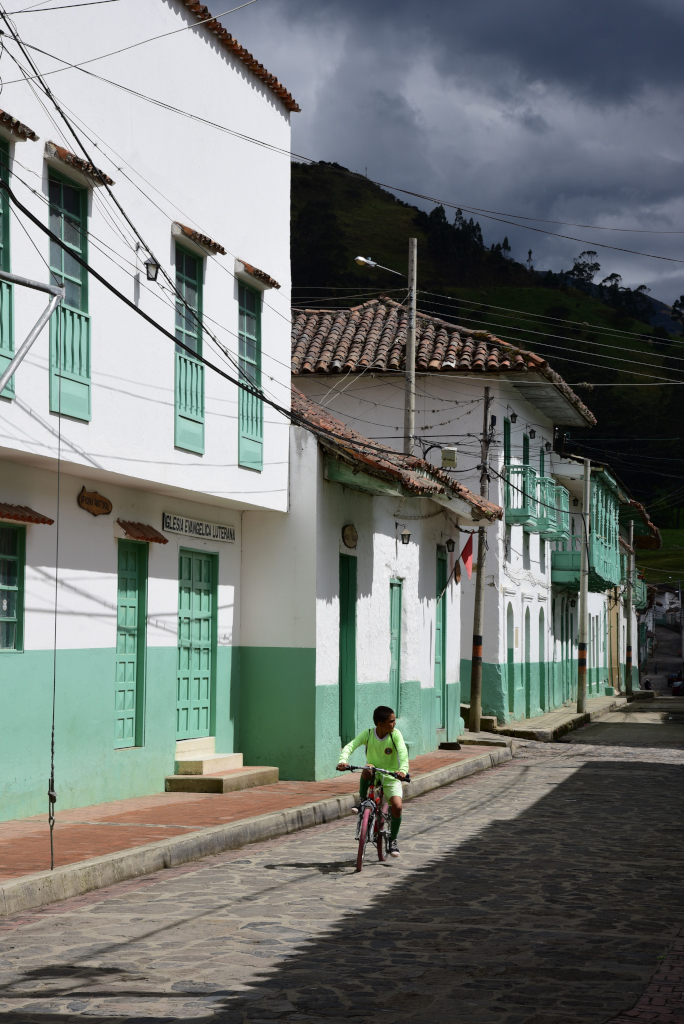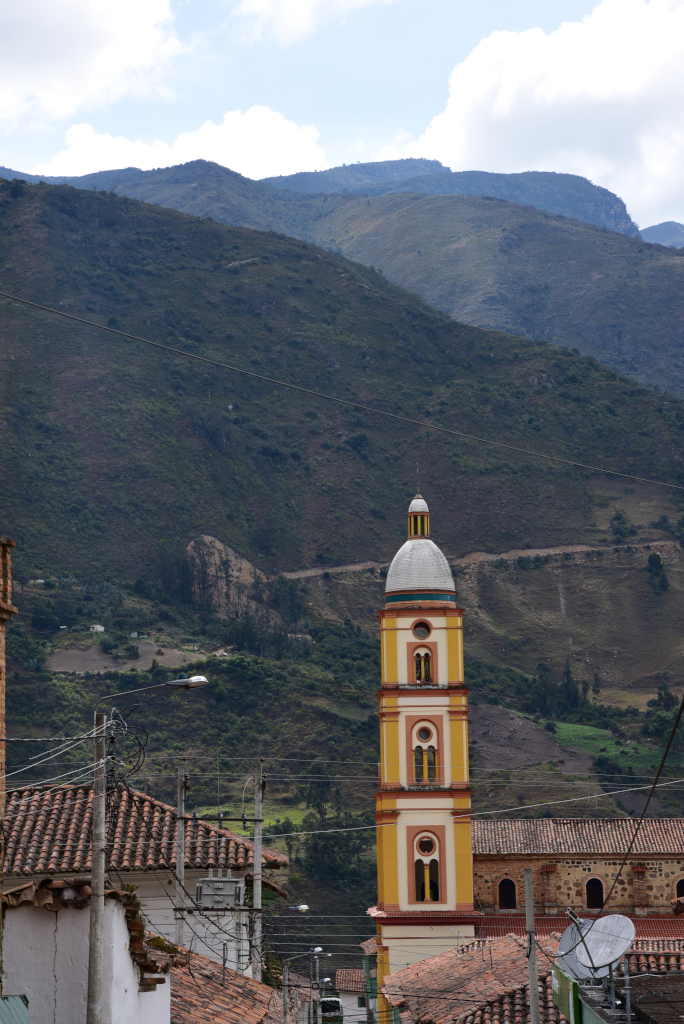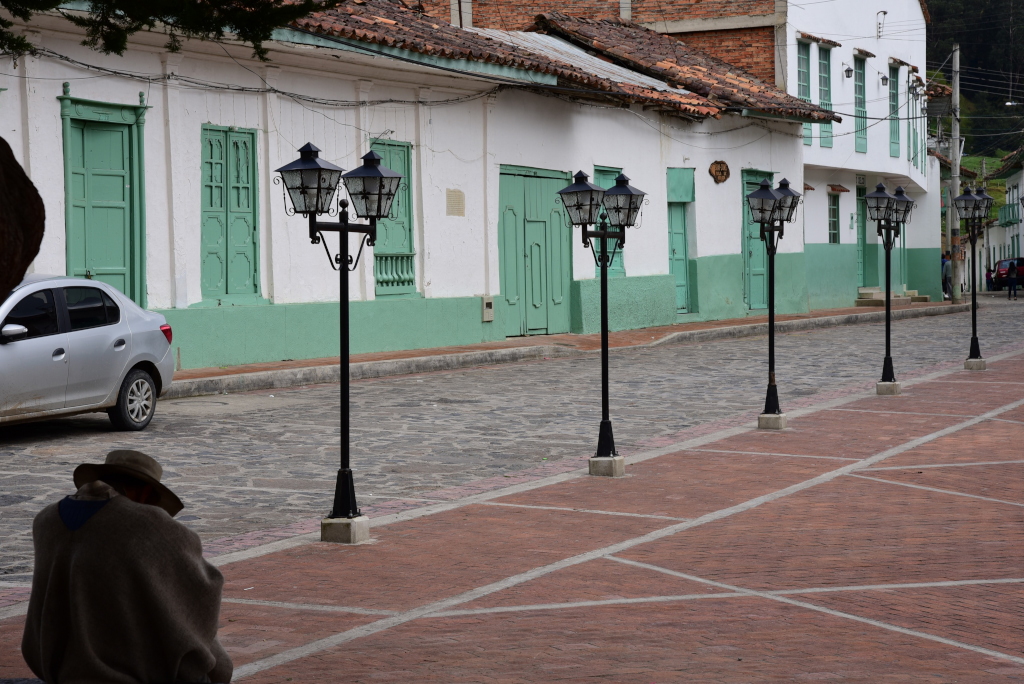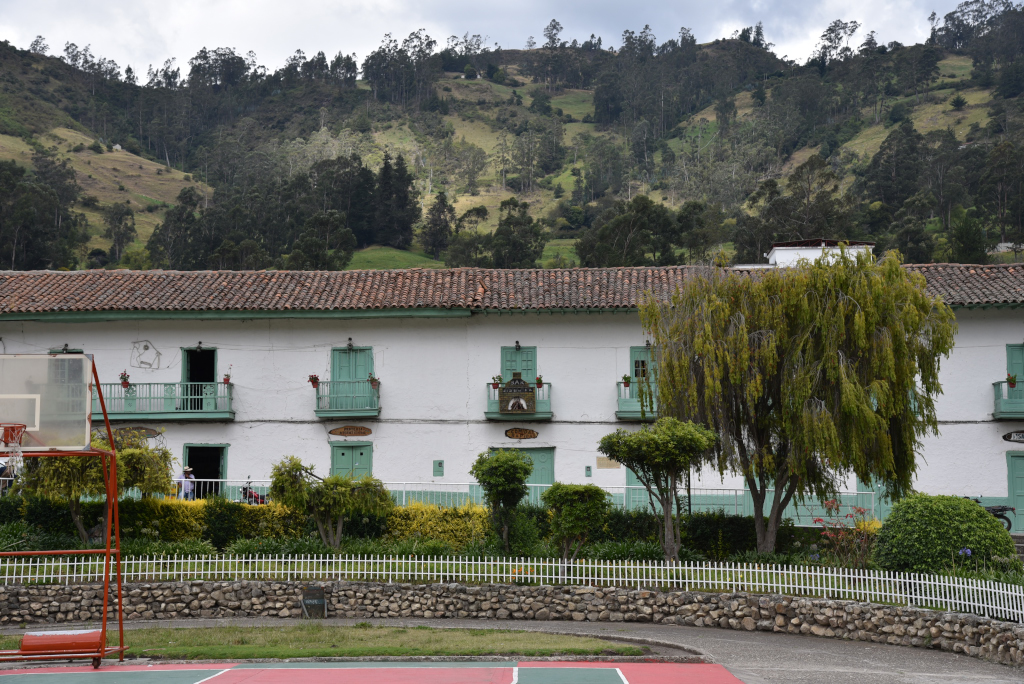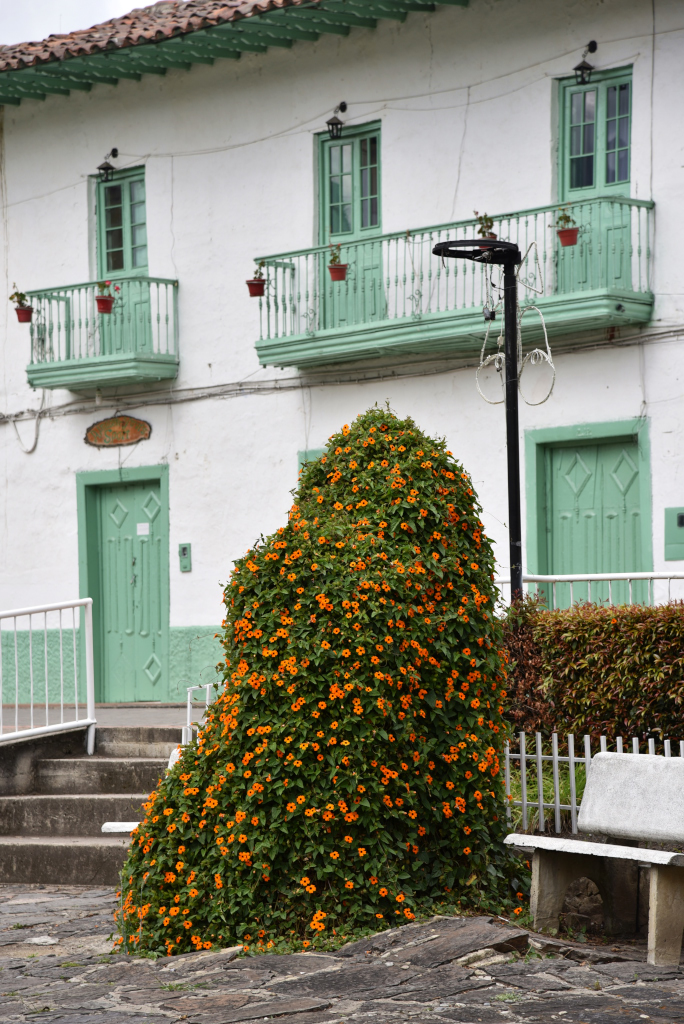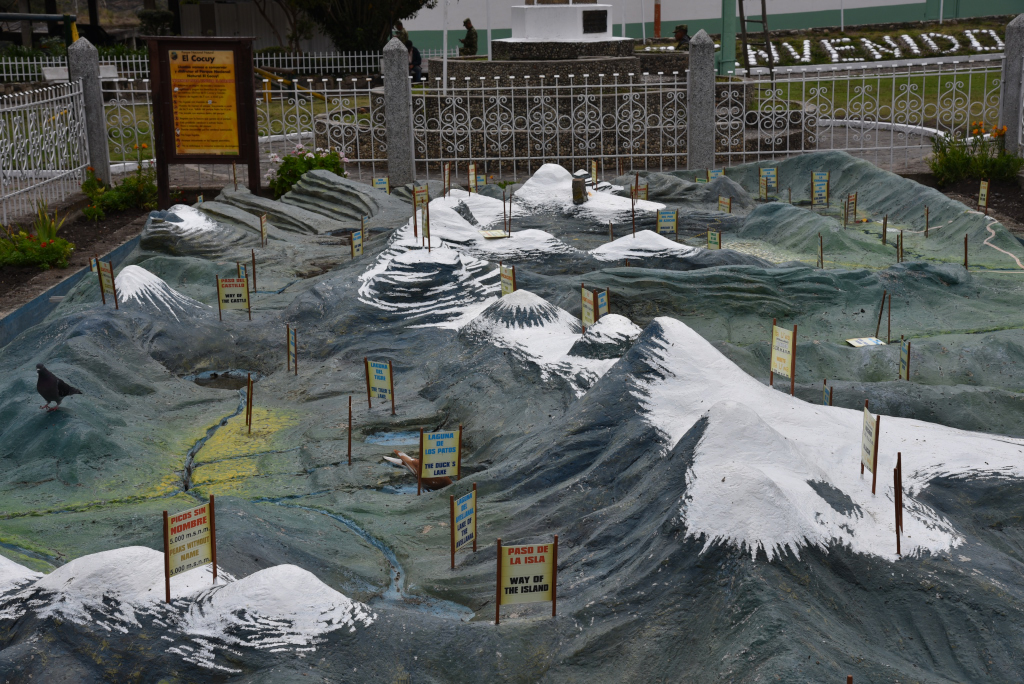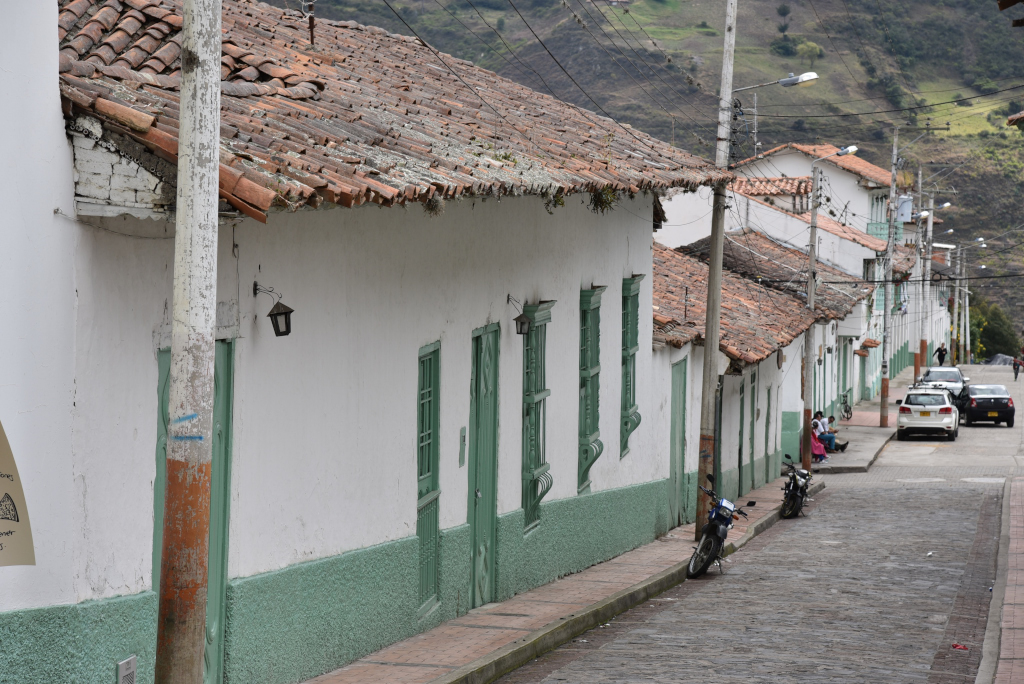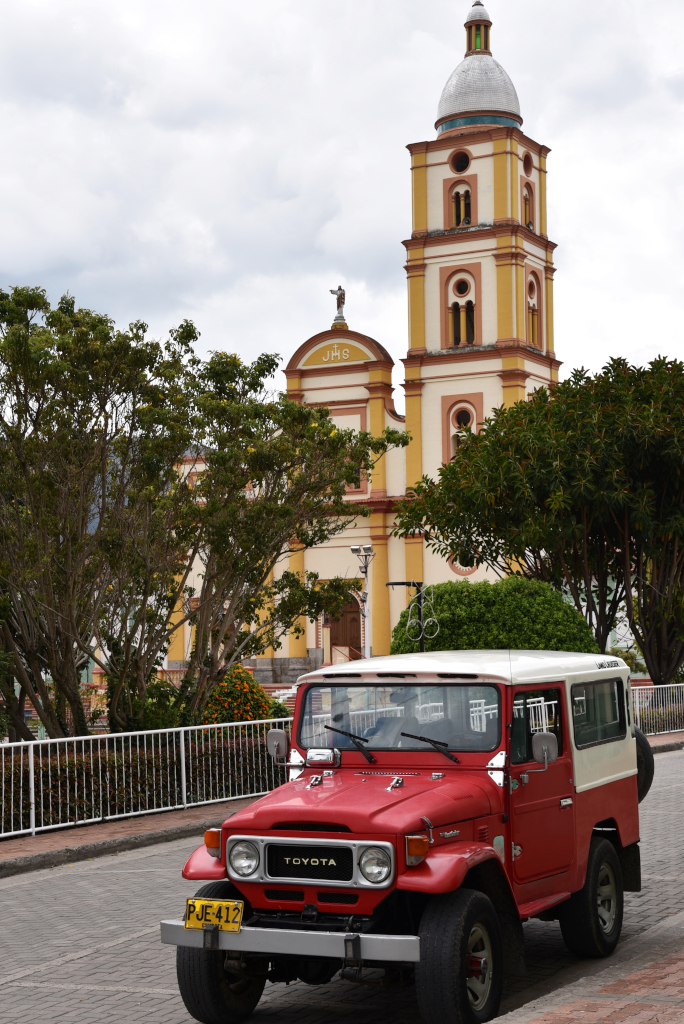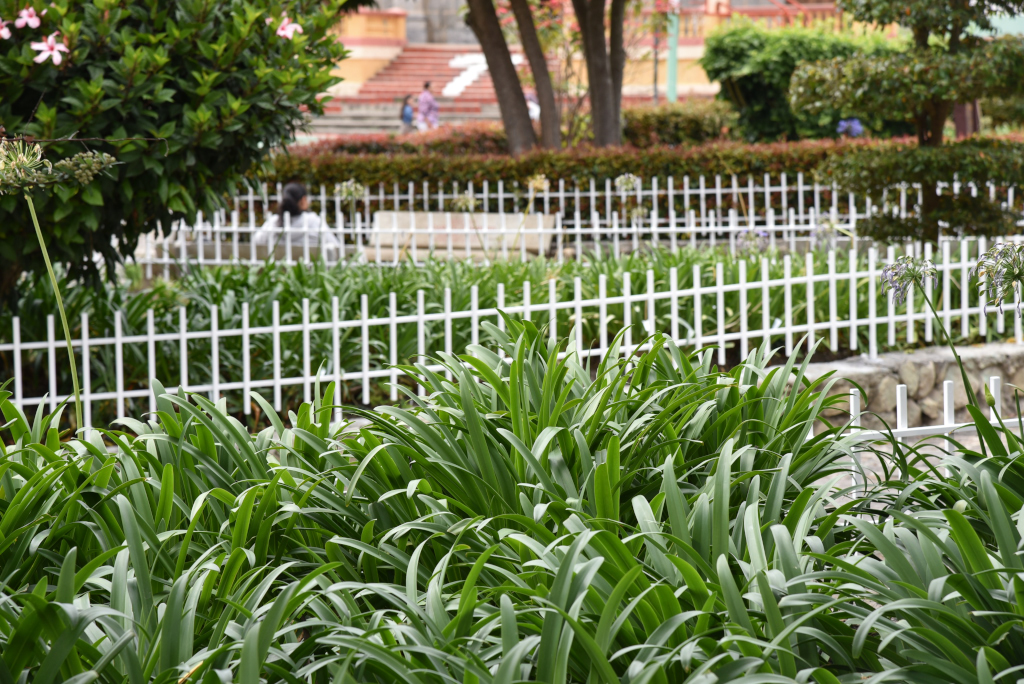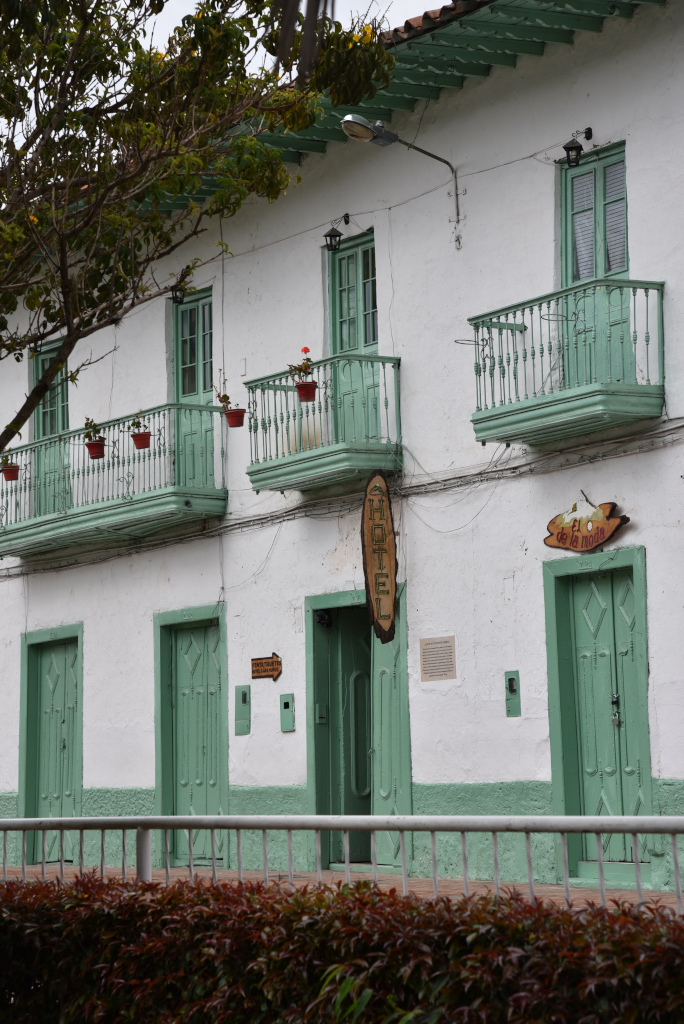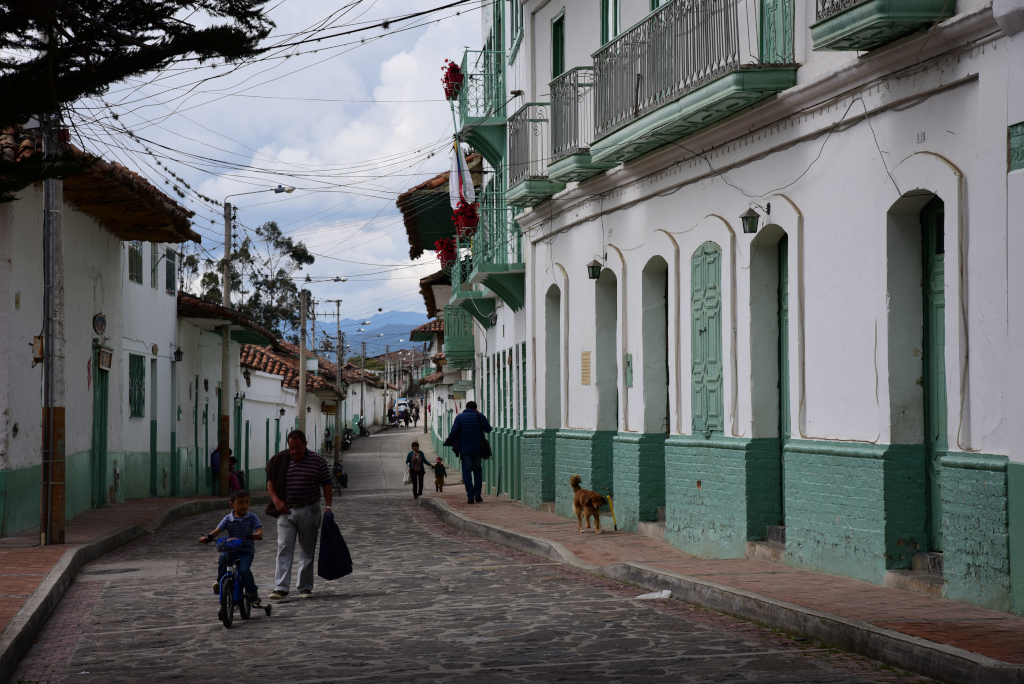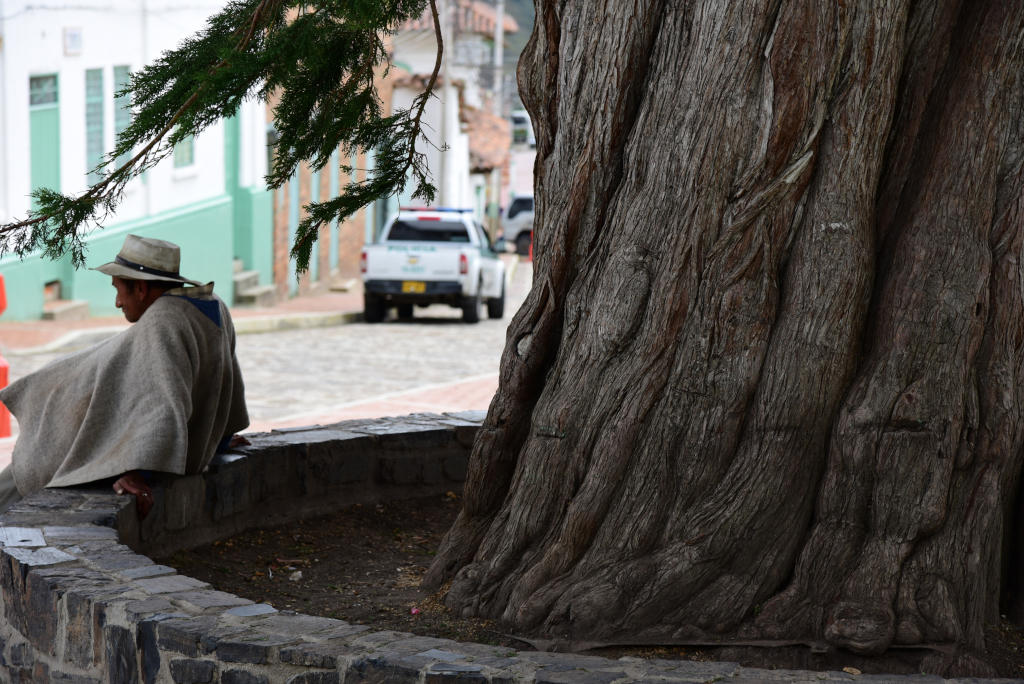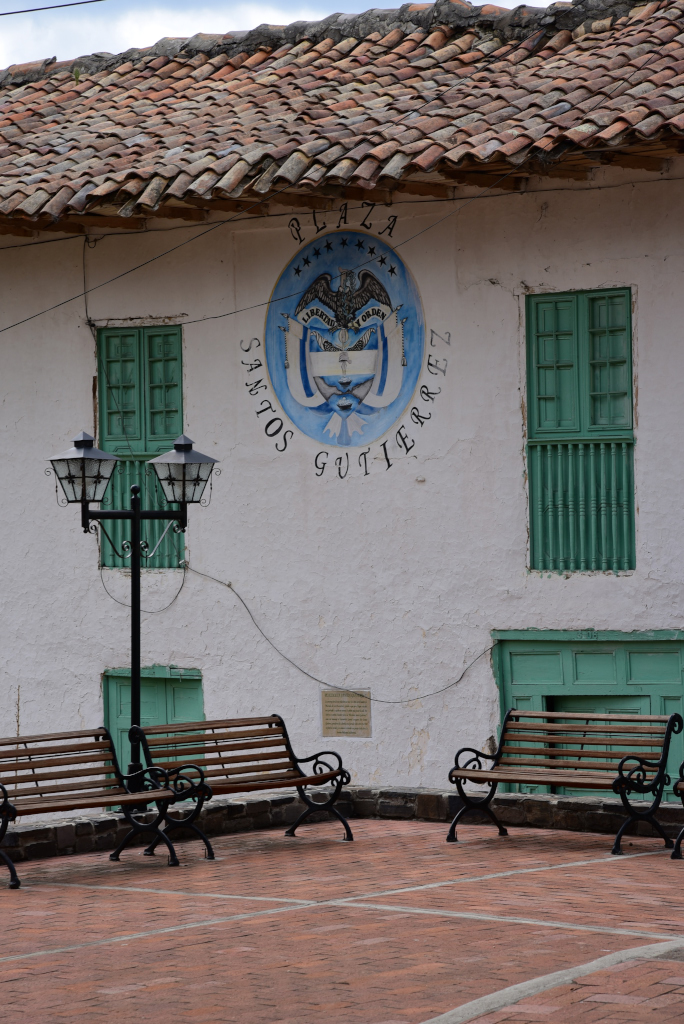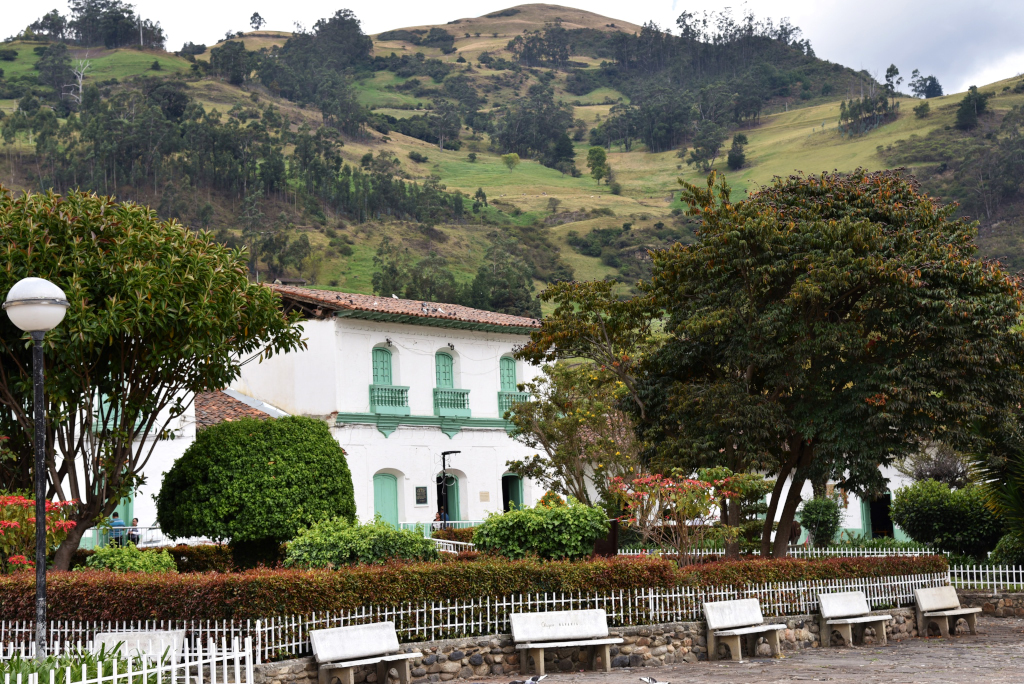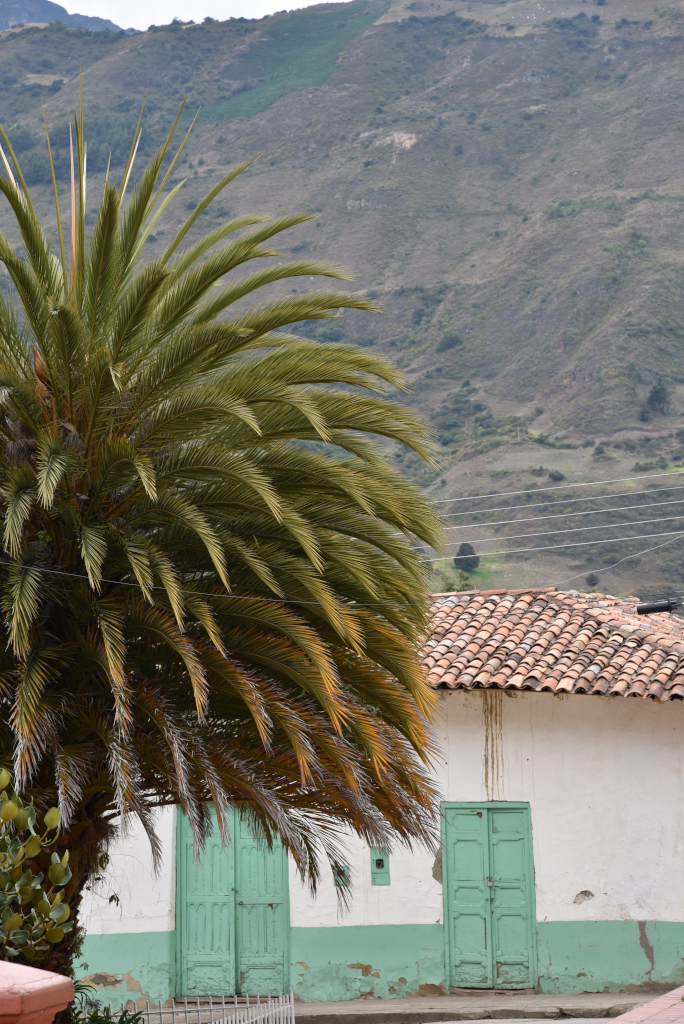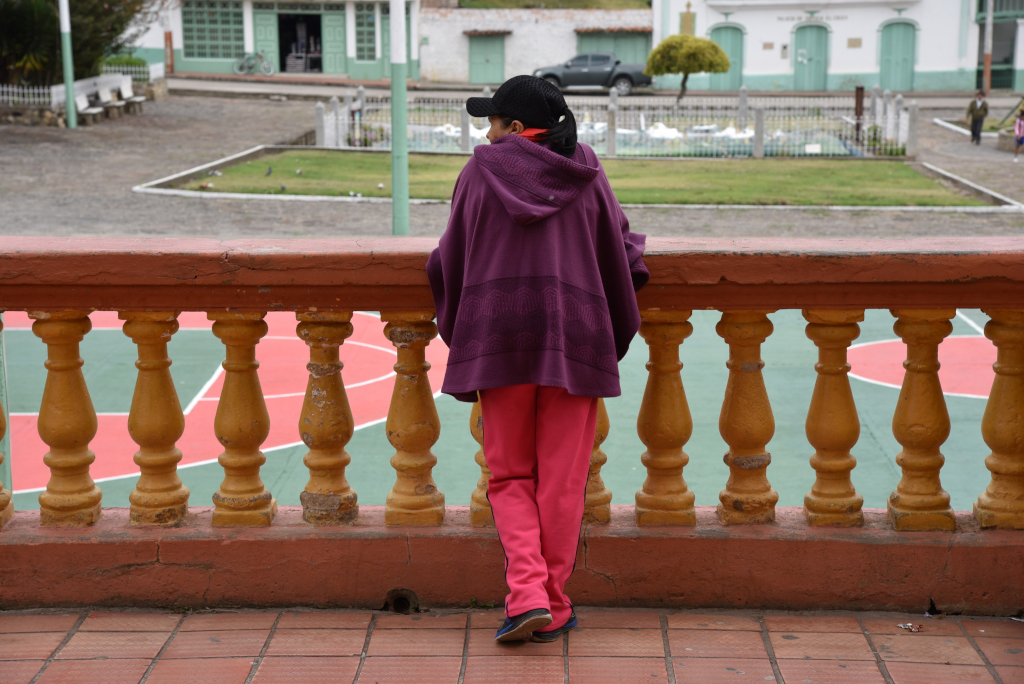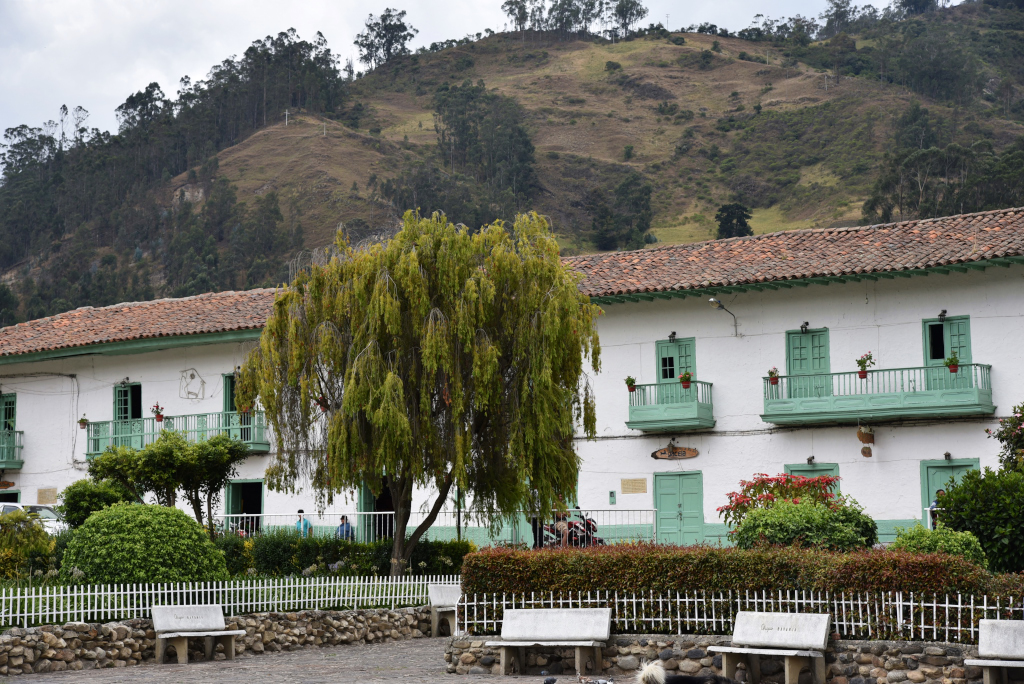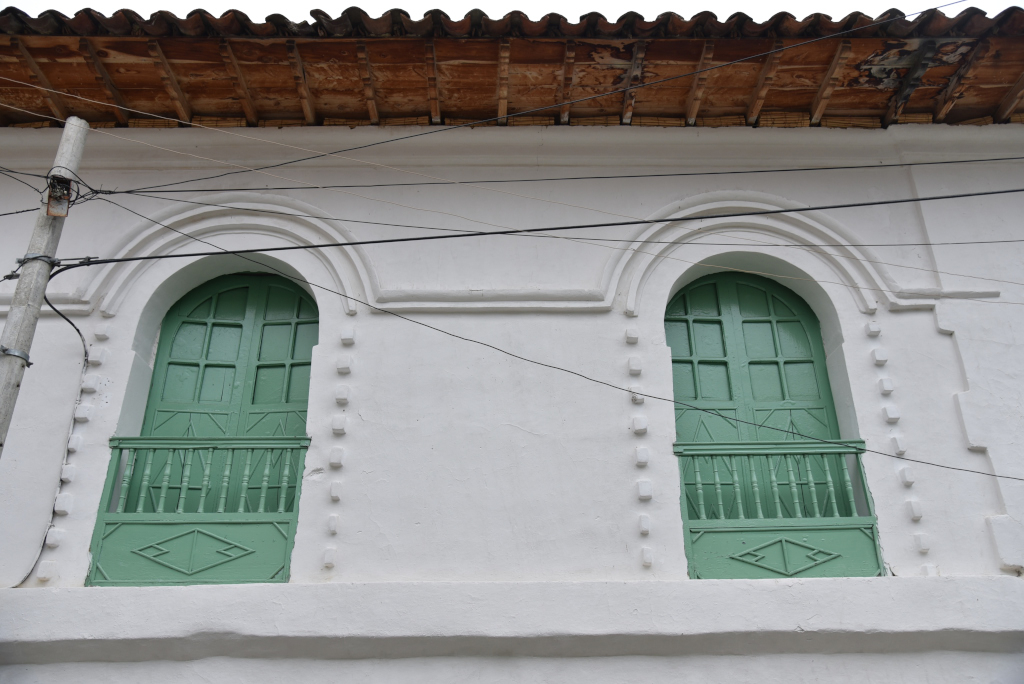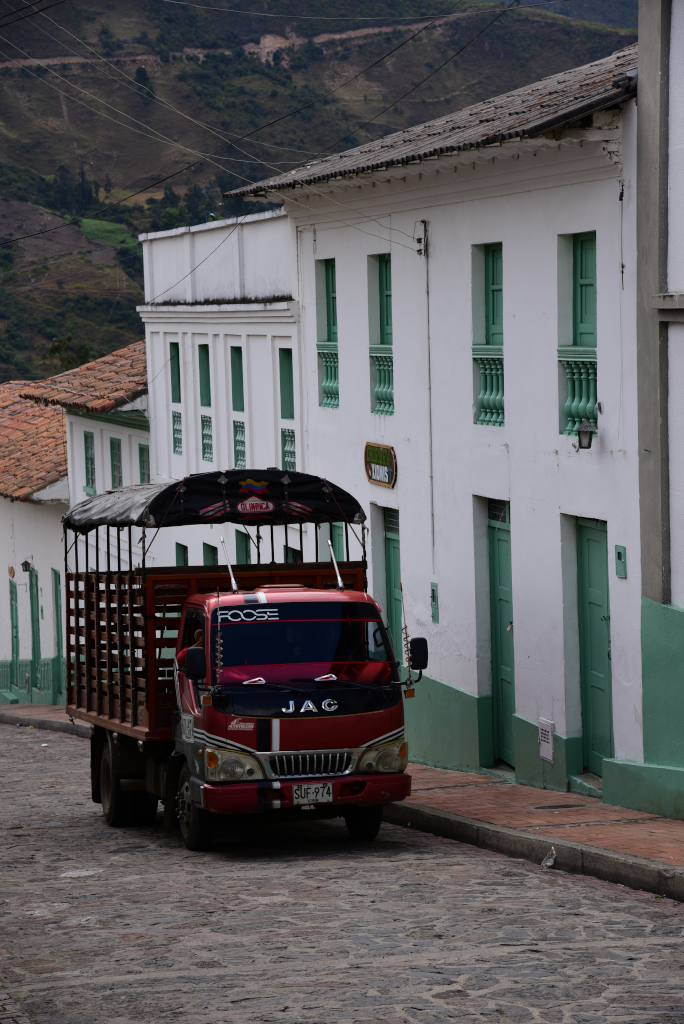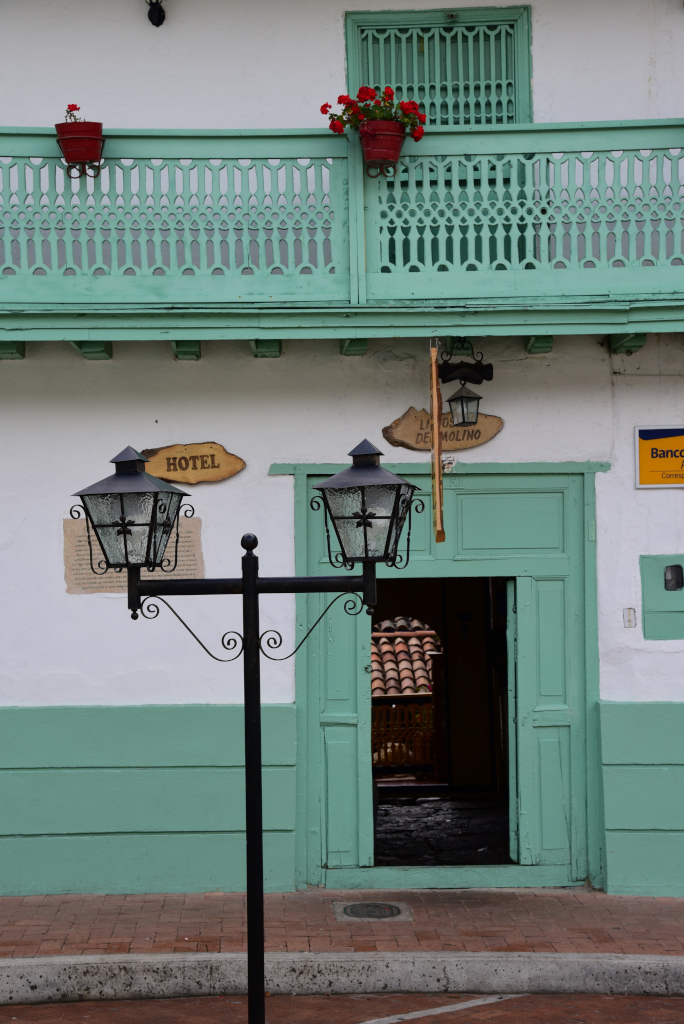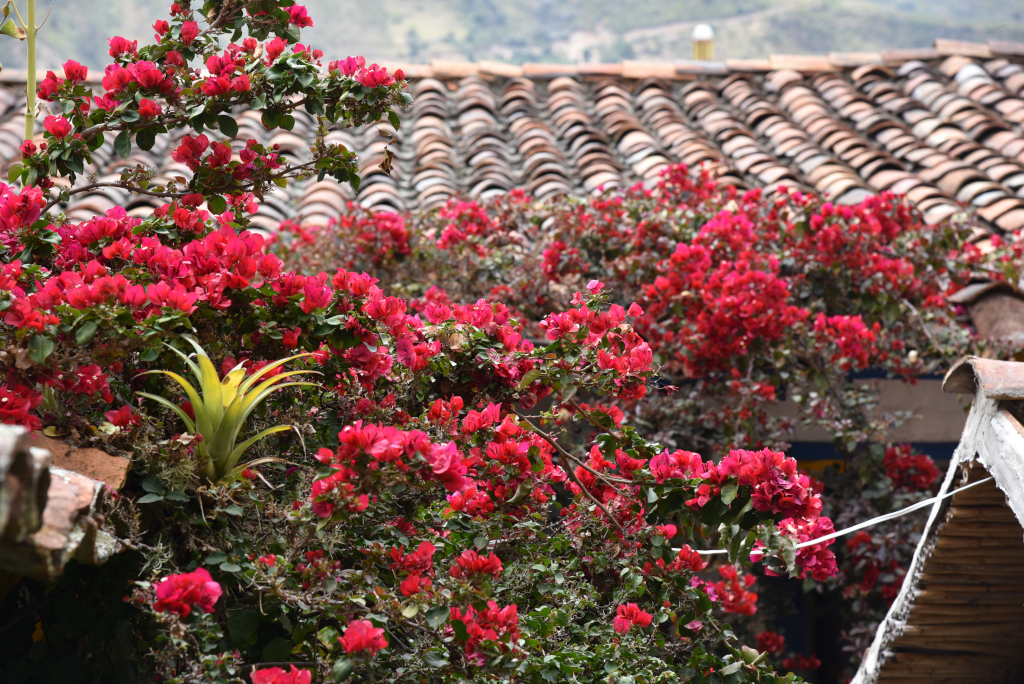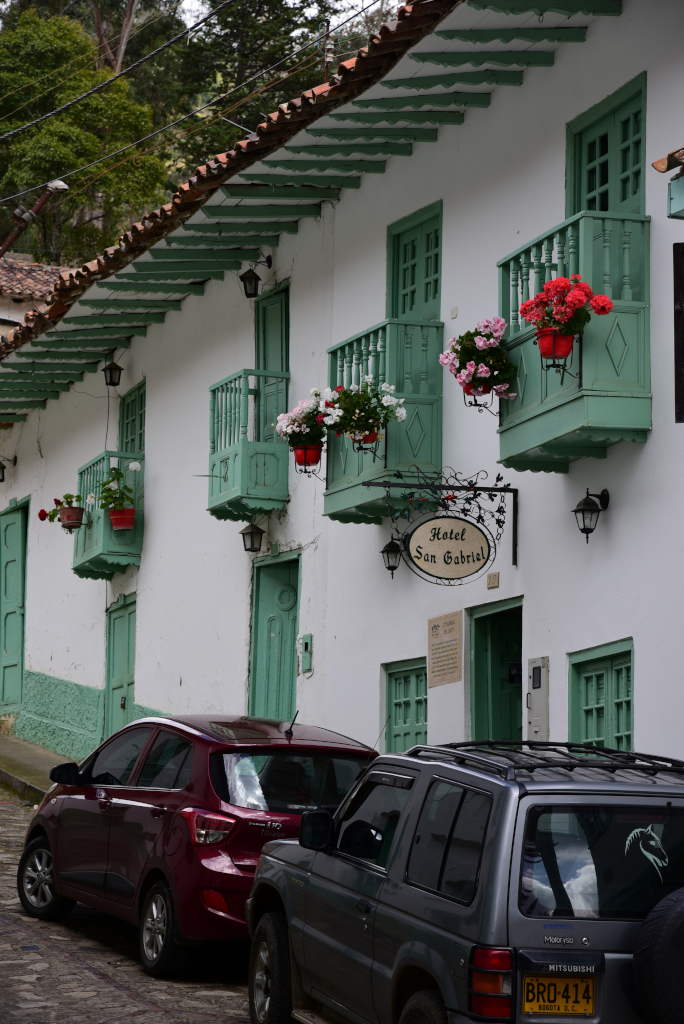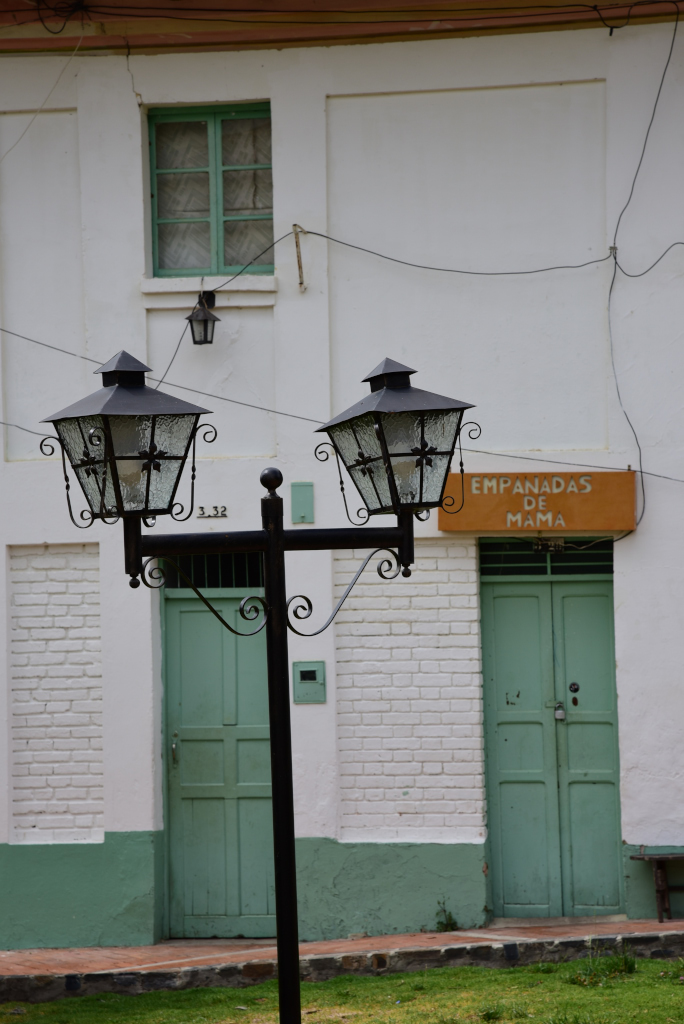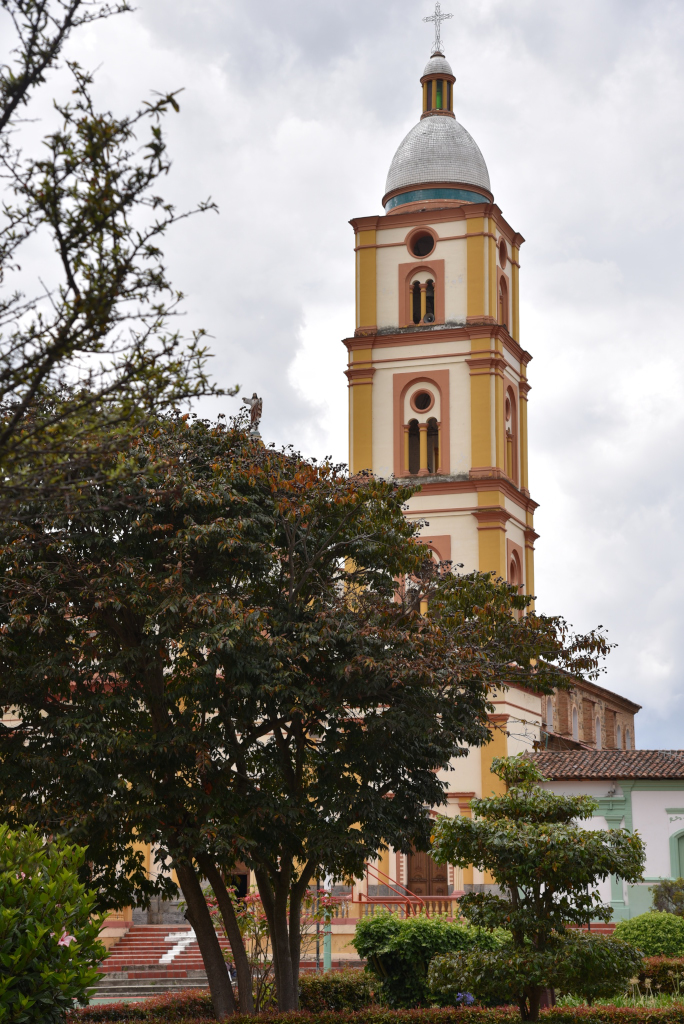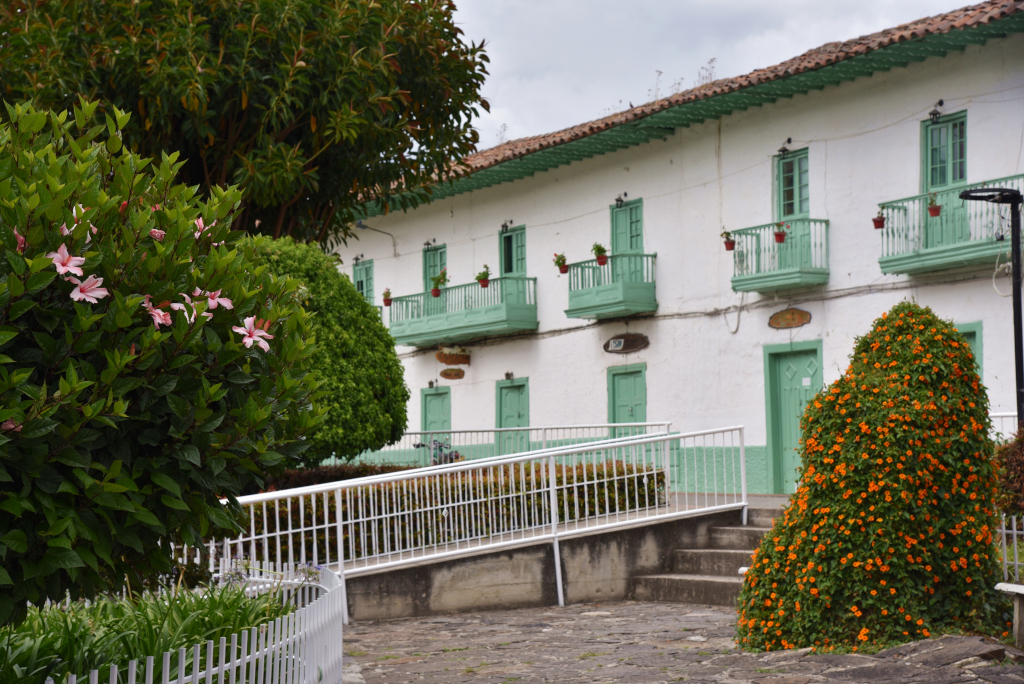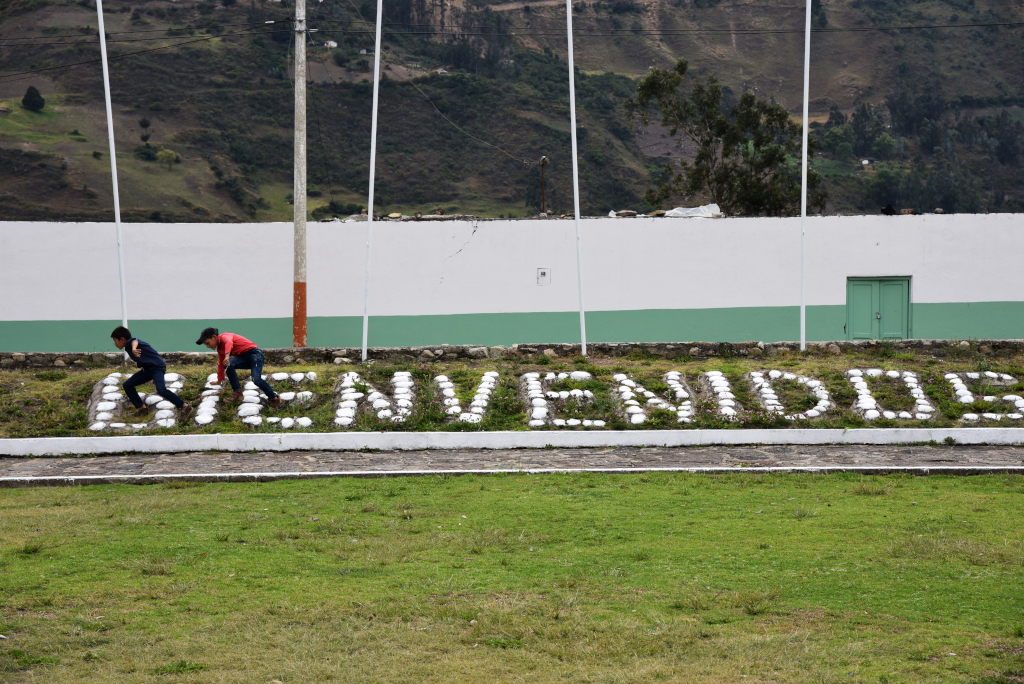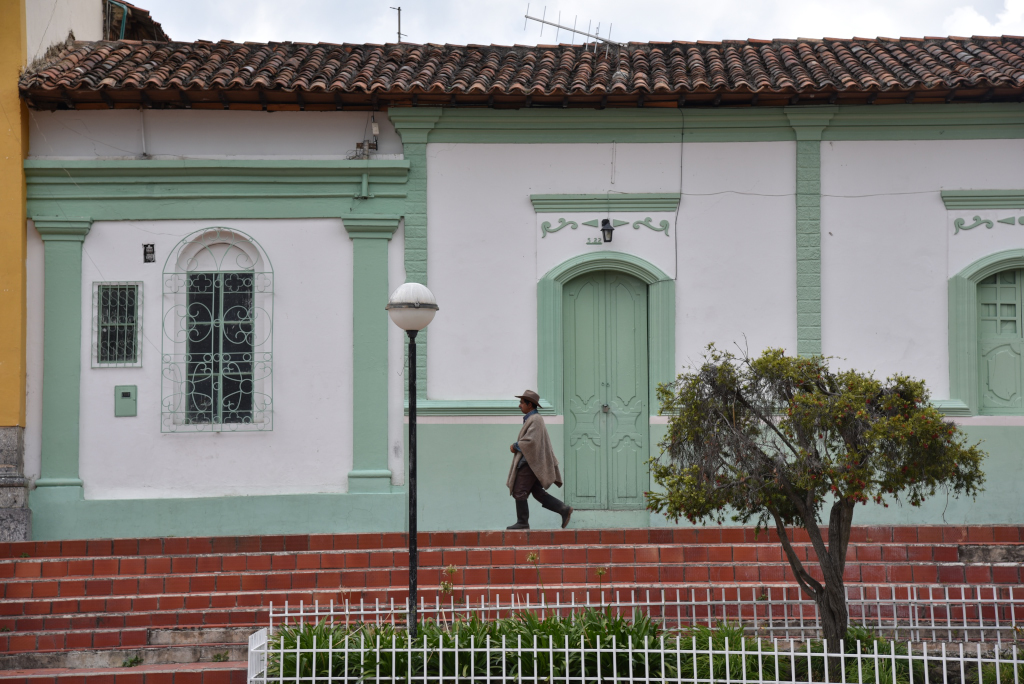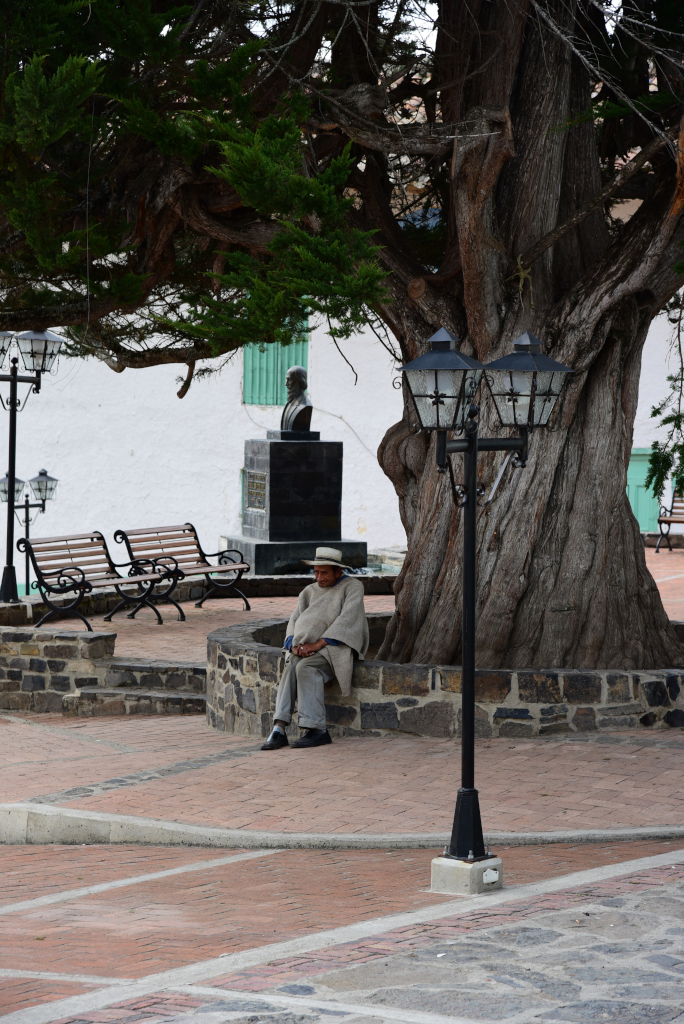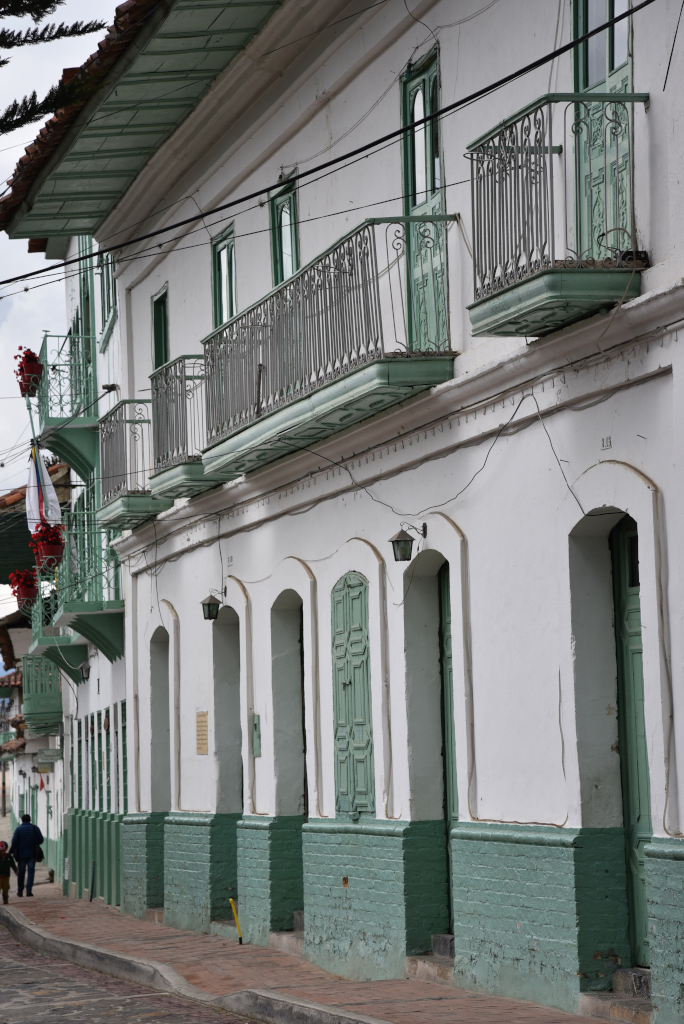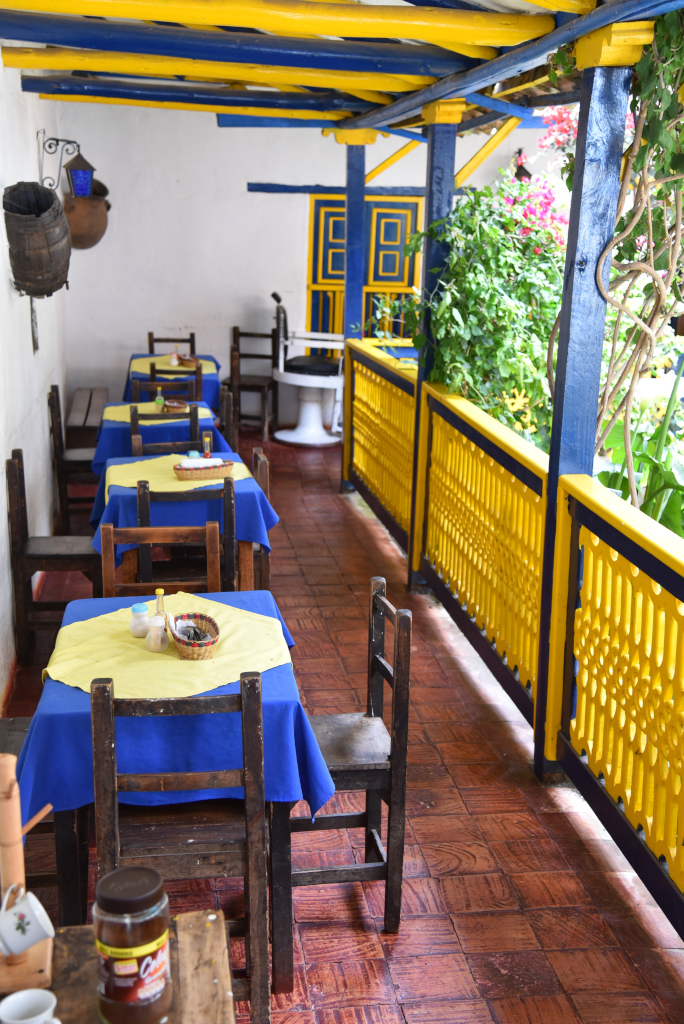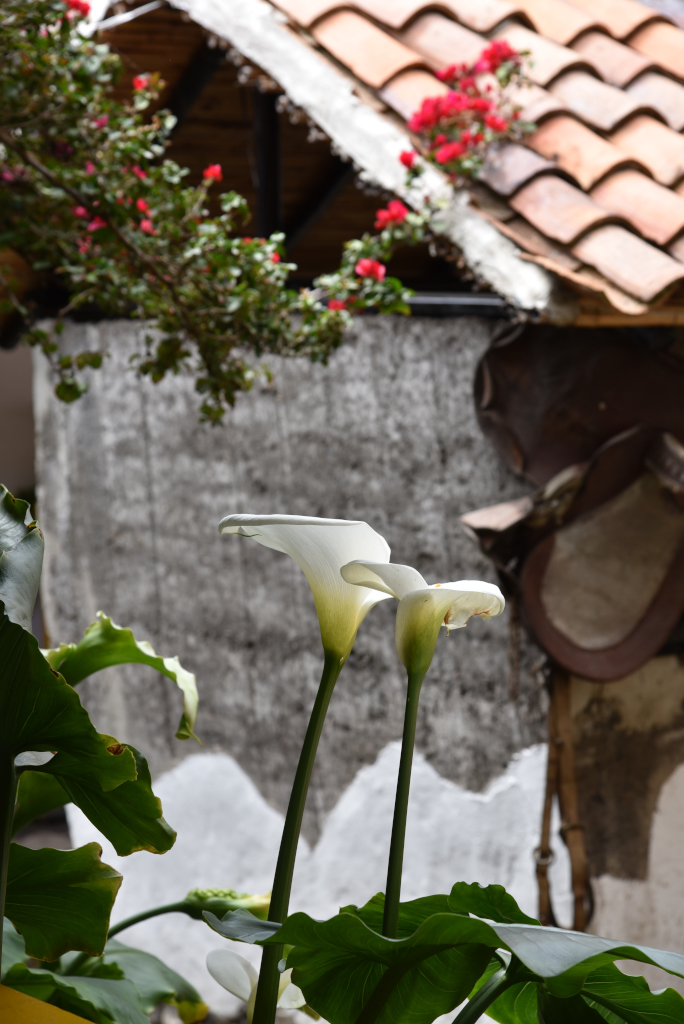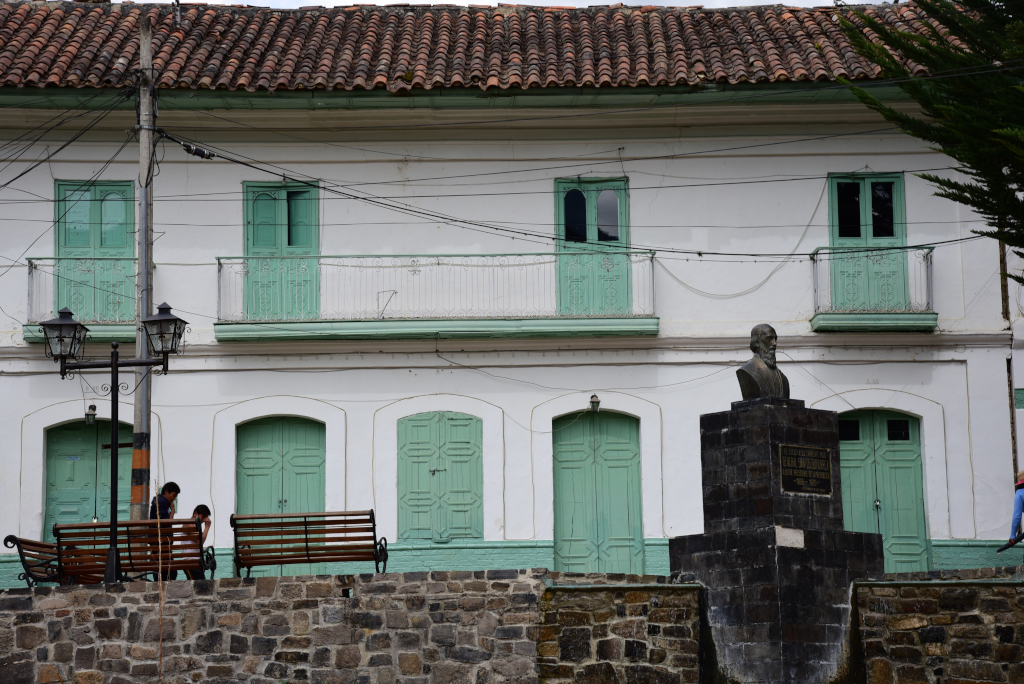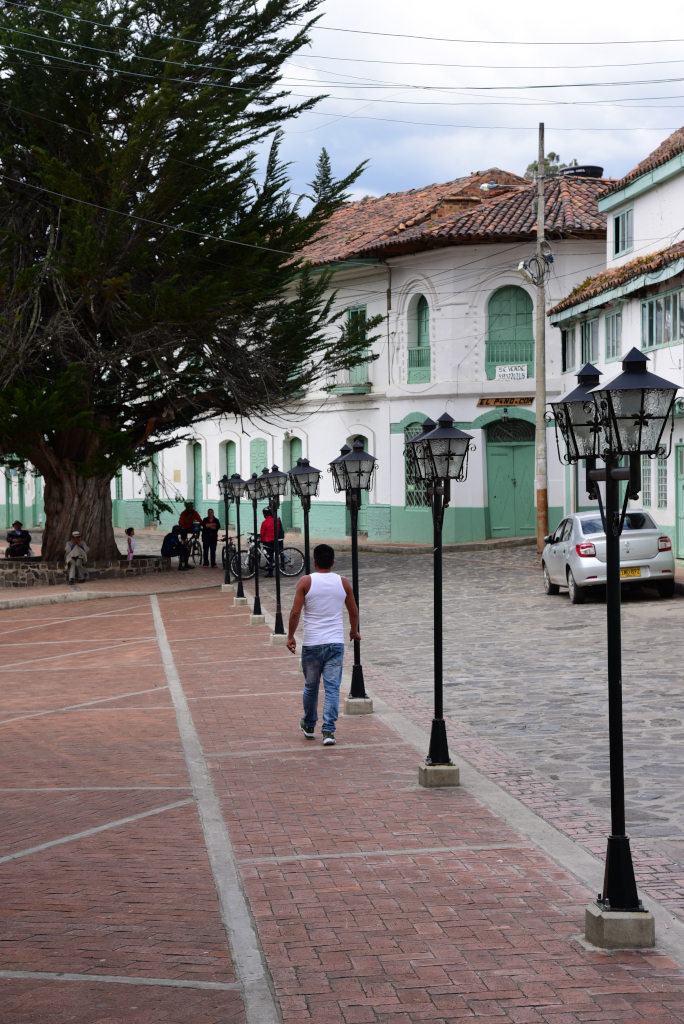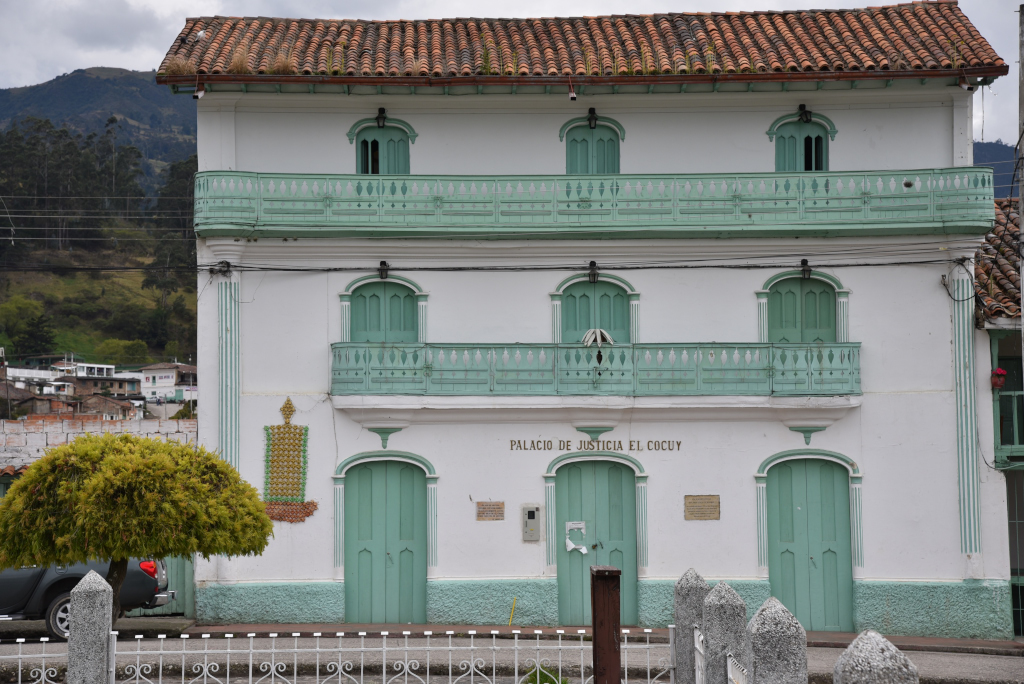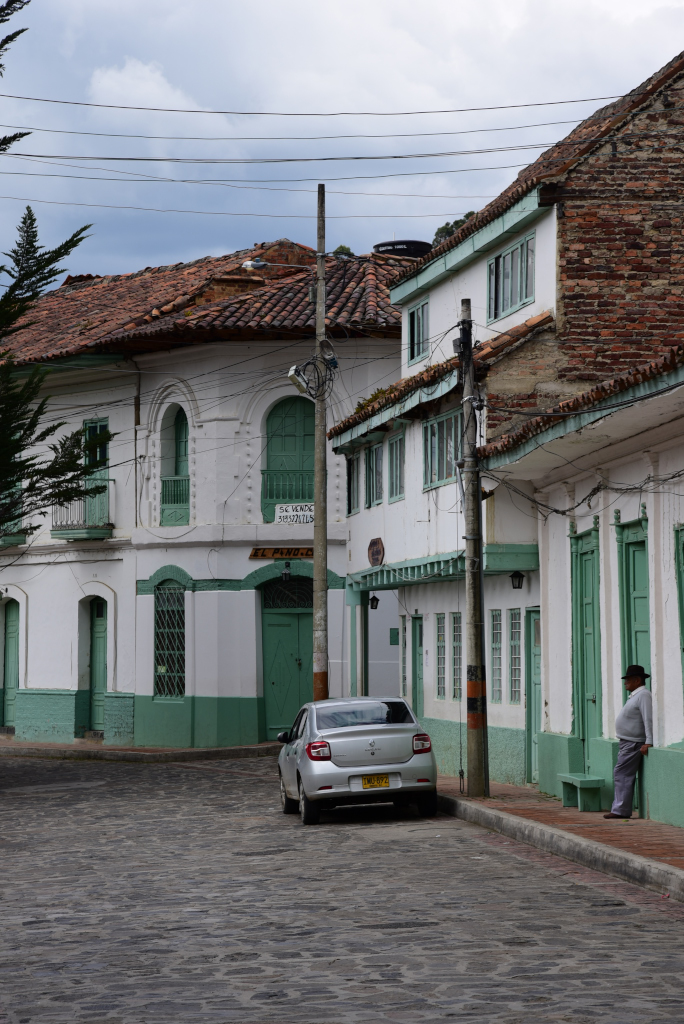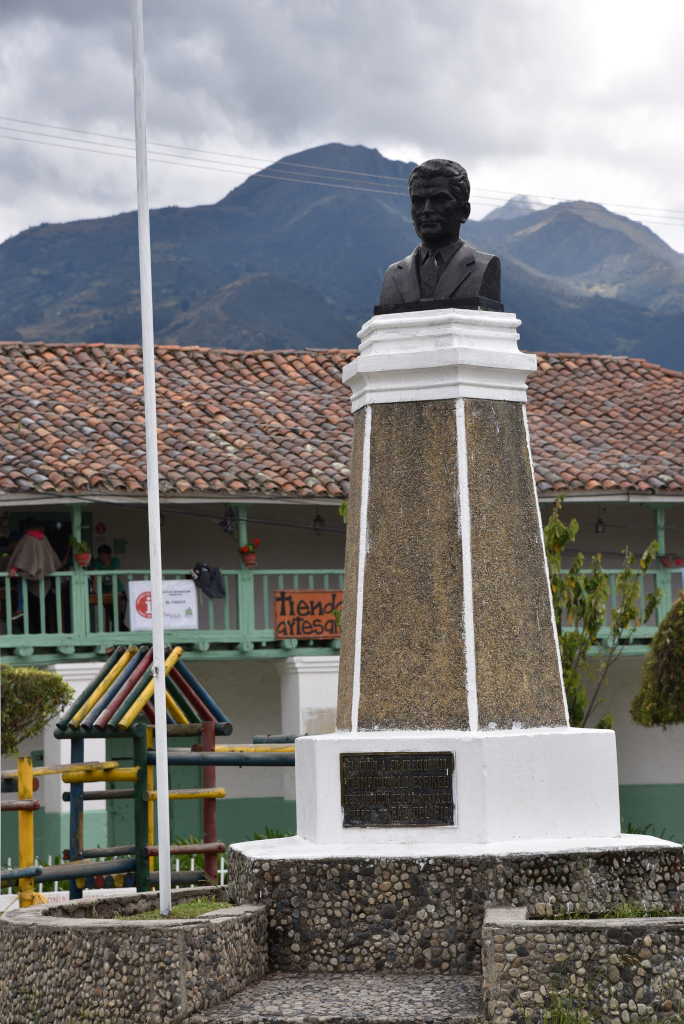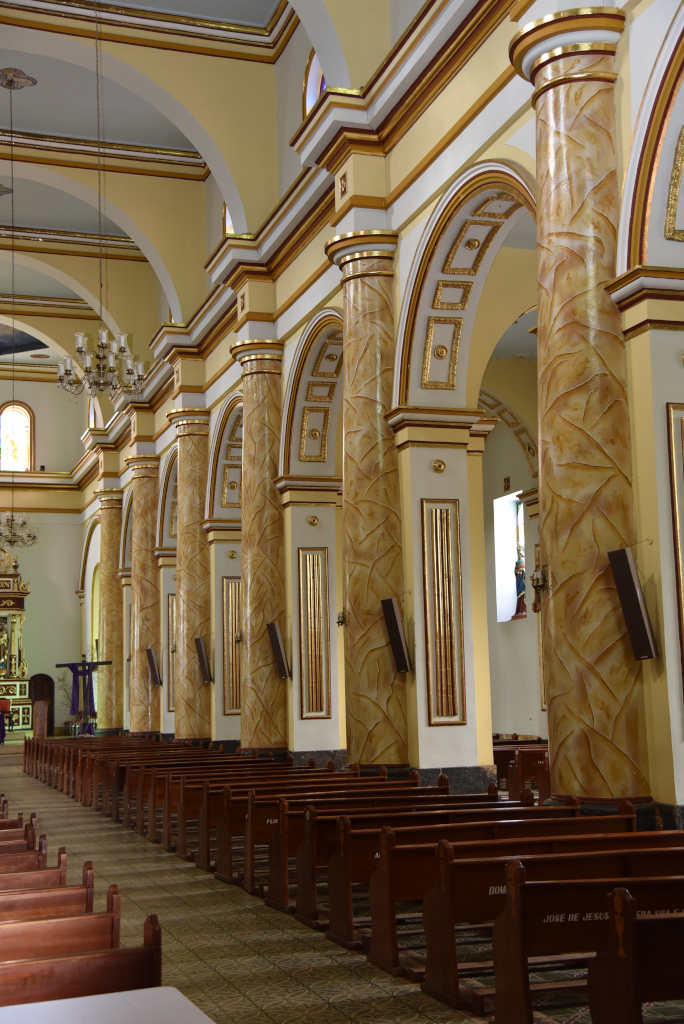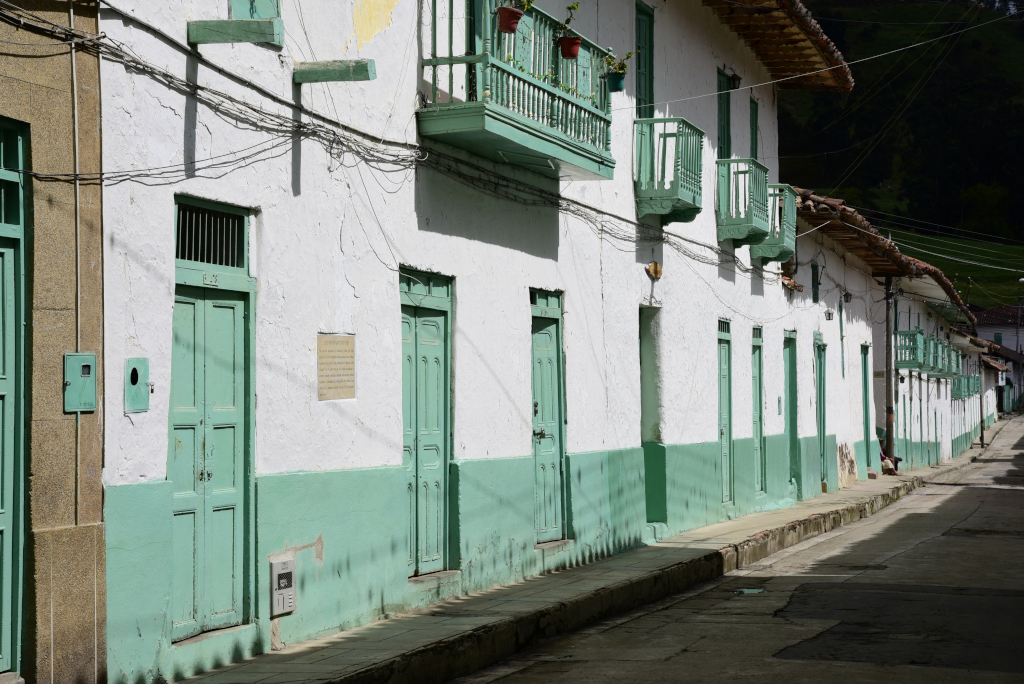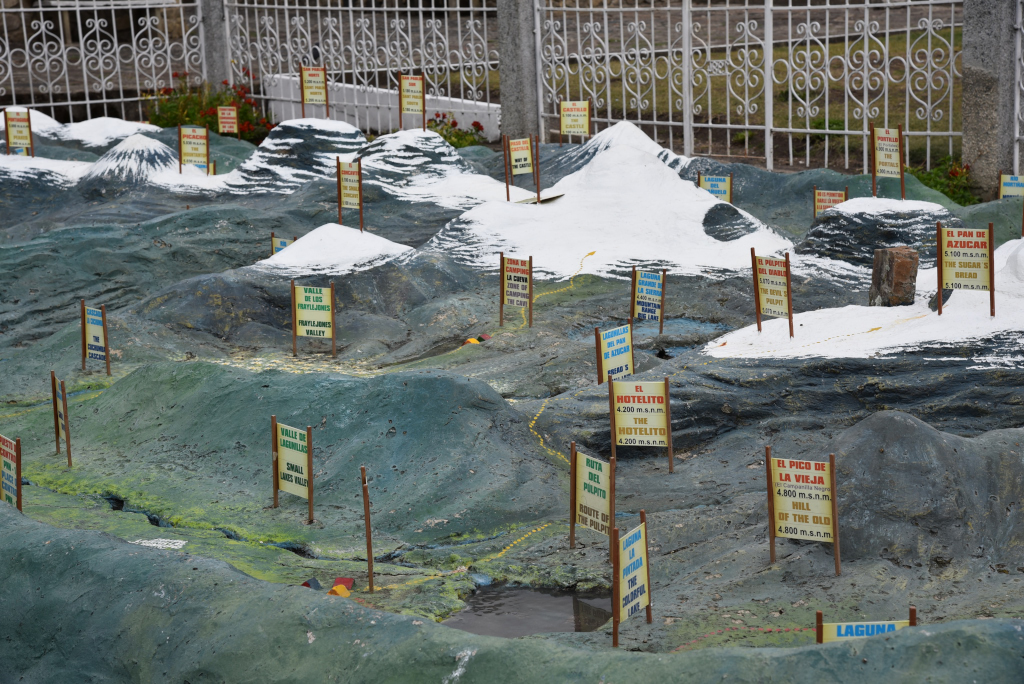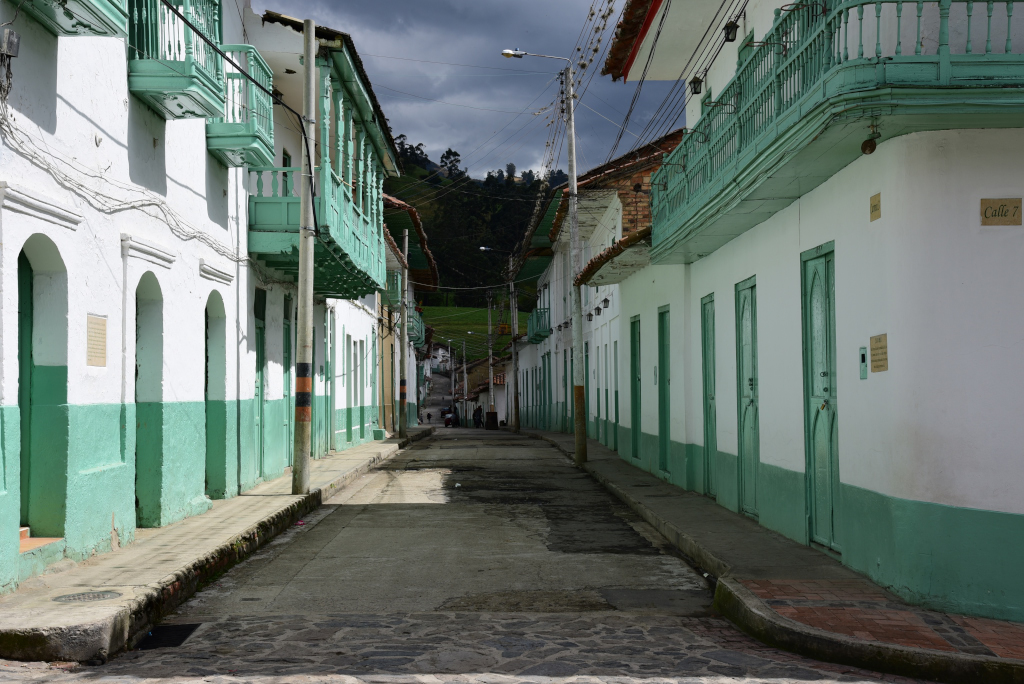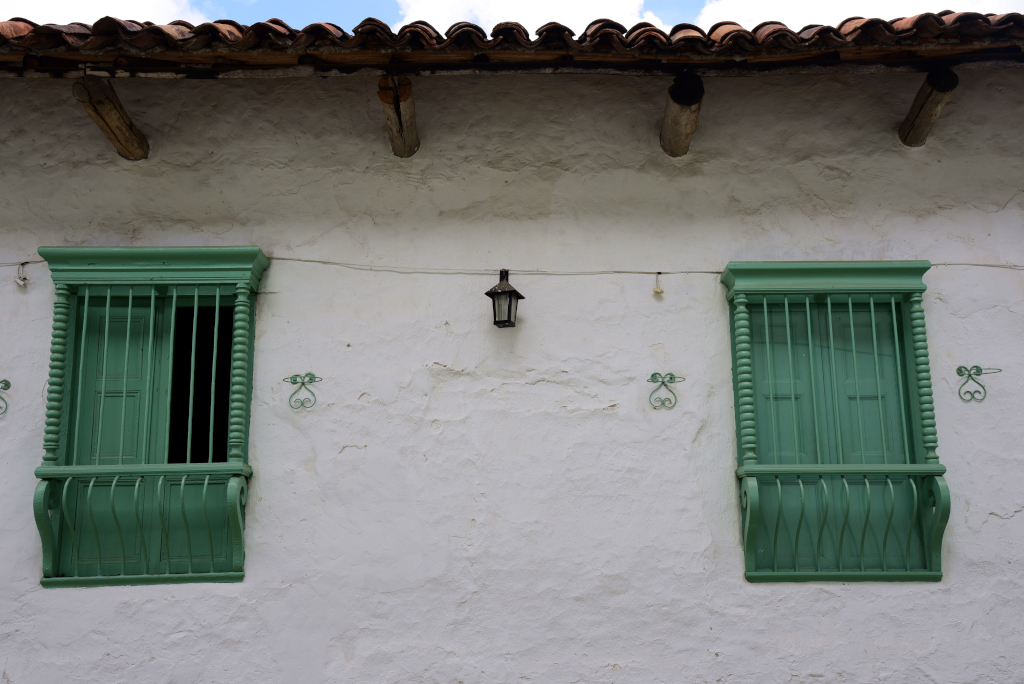February 17, 2018
Despite the concerns of the manager regarding the noise from the disco, I was able to get to sleep following the evening’s excursion into the world of writing. I didn’t get attacked by the spider clutching desperately to the wall, either. Breakfast at the Posada del Molino next door is uninspired, but then El Cocuy is hardly known as some gastronomic centre. At the table next to me are a young couple from Munich in Colombia for a relatively short trip, he in any case. They are also wanting to figure out how to visit the PNN Cocuy, and have only done the most basic investigation – not that it is all that evident how to proceed with visiting the park.
Walking around the small town, omnipresent are the incredibly charming, uniformly-painted green doors and shutters, the constant police presence, and the largely older population huddled in the streets with their dark brown or grey ponchos. As everywhere else in the highlands, washes of bougainvillea and other flowers occasionally adorn the adobe walls, although the cold climate limits the possibility of growing plants of a tropical nature.
One or two stories, the window frames, sashes, shutters, balconies, and lower wall portions are consistently painted in mint green. Plaques adorn the walls of buildings, describing the history of the structure. The small streets radiate out from the main square, which is in disrepair, although it also features trimmed and flowering hedges, as well as the most regal architecture in town facing the square.
Despite the relative commonality of low-slung whitewashed adobe structures with standard layered terracotta tiling in the Colombian highlands, there are unique touches to each town, and that typically amounts to the manner in which paint is applied to the doors, window frames, or other architectural features.
The military is almost always present on the square. In fact, the military here is quite visible throughout the town, probably because of incursions in the area of the ELN, one of the fringe guerilla groups still operating in the country. The sense of renewal visible in Colombian towns is probably part of a program to provide disincentives to the people to participate in subversive activities.
Notably, most stores are closed in town. In a place this small, retail establishments may open on a haphazard basis, without any reliable hours. Hence it is difficult to determine where one may actually eat, or what the best places to to buy food may be.
One of the most beautiful parts of the town is around the Posada del Molino and Hotel San Gabriel, the narrow road opening up to a small recessed plaza, traditional gas lamps that lining the sidewalk, with relatively ornate fascias of the buildings. The streets are almost empty, the local population somewhere effusive, retiring, indifferent or surprised to see the incursion of foreigners.
And yet, despite having been told copious amounts of tourists are coming here, there are possibly a few other foreigners visible on the streets other than myself and the young German couple. It is also worth noting that people with their own vehicles will not necessarily be obliged to stay in El Cocuy for the night – they may continue on to their designated cabanas on the flank of the park once they have made their reservations.
I chat with the young German couple on the plaza as we peruse the moquette of the national park’s topography. Another young German by the name of David joins us, who turns out to also want to share the cost of the guide on a trek into the park. But in order to determine how to organize said trek, we have to return to the park office.
It turns out that there are some complications involving hiking in the park. For one, all hikes have to be pre-booked. Once in the park, it is not possible to book a hike and order a guide. This seems particularly inflexible for individual travelers, since you have to count an extra travel day to get between cabañas, located on the dirt roads that run along the periphery of the park, and to which the only type of public transport available are lecheros, trucks that pick up fresh milk from farmers en route. Hiring a car to access the cabañas can be prohibitively costly – if you are travelling on a budget.
What’s more, the lecheros only run counter-clockwise, so if you want to not have to spend too much money for transport and do multiple hikes in the park, it would be necessary to start with the hike involving the lowest elevation cabana, then move up. The cost of a guide can be shared – to find other potentially interested parties, it would be best to come back to the office later in the afternoon to see who else is signing up for the hikes.
I see the Germans later on at Posada del Molino and they tell me they have decided just to do the free hike outside the park, as the organization in concert with the regulations of the park becomes too unwieldy, especially considering that he has to be back in Bogota on the 19th. If the park administration wasn’t so strict about the manner in which guides were to be booked, it would be easier.
Returning with David to the park office to ink some sort of hiking arrangement, we are greeted by an older American couple from the Denver area that would also like to do some hikes – and critically, they have a vehicle, and they would not be averse to taking us along, which would be a huge coup, given the complications and cost of transport into and around the park. They have in fact been poking around the area of Arauca in the llanura just off the Venezuelan border, which is an area tourists are apparently not welcome to travel in. Yet they had no issue with travelling in the area, and didn’t feel any danger.
The pieces are falling into place. The Americans want to do the hike that is furthest away, which David and I want to do as well. They are clear about not wanting to rush through, which is fine by me, although in any case, we are beginning extremely early, and have lots of time to play on the hike, only that at high altitudes, the low pressure weather systems tend to move in mid-day.
David and I want to do one of the lower hikes as well, David the Pulpito del Diablo, and myself the one that goes through the freilejones to the lakes. The challenge for us is that the lecheros travel counterclockwise, and so once we are at the farthest cabins, we will have to travel back to Güicán and El Cocuy before being able to get back to the Esperanza cabin. Except that the Americans offer to take us down, which is great.
Even better, we can leave at a civilized hour tomorrow morning, rather than 5 am with the lechero, and get in the additional free hike running below the park, which can be started from the cabañas nearest El Cocuy. The first hike will take place at 6 am on Monday, involving all four of us, and the second on Wednesday, also 6 am, involving only David and I.
David and I get a tour around the area of the plaza thanks to a woman with a bronzed aquiline mien who is intent on bringing us to just the right place. Asking for a mercado here is obviously inappropriate, inasmuch as mercado refers the store, not outdoor market. And these towns are probably too small to have a traditional outdoor market. Another thing that is confusing in Colombia is the use of esquina, which technically means corner but is used locally in a more ample sense, leading to confusing instructions.
In any case, we are led several blocks past the somewhat bored and astonished soldiers brandishing automatic weapons, probably also not entirely thrilled at being here, to a store that is just closed. But we find another one that is open, with an adequate selection of fruit, vegetables, bread, ham and cheese, all very basic, but enough to keep us fed on our long arduous hikes into the Parque Nacional Natural El Cocuy.
Supper is at Empanadas de Mama, brightly lit, with surprisingly well made, fresh arepas, and excellent fruit juices. Who would have thought that the town would become the place for such good empanadas and arepas! The problem with arepas sold in public establishments is that they are typically not fresh, which takes a food that has the potential of being excellent and inspiring to being simply regrettable.

